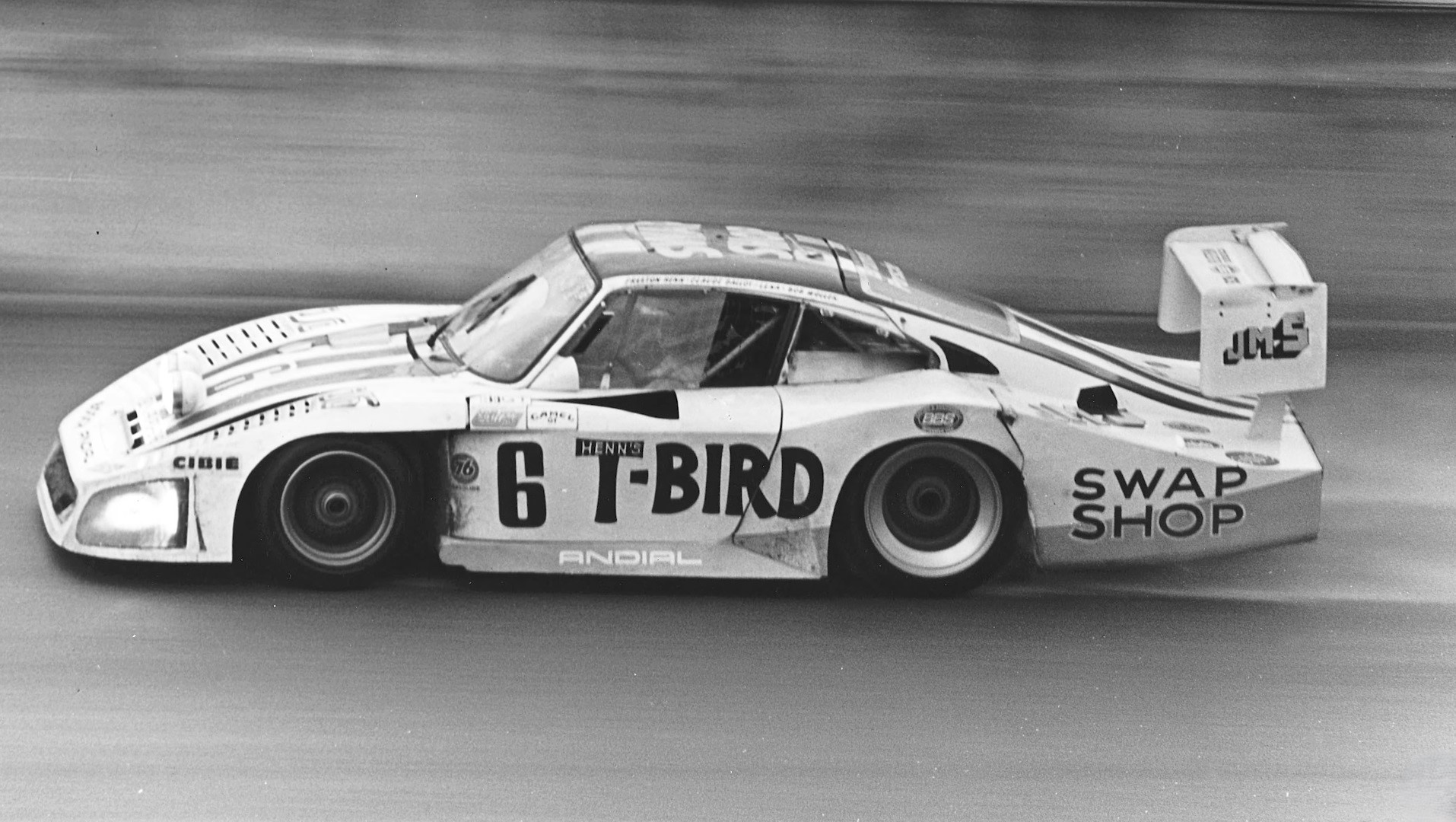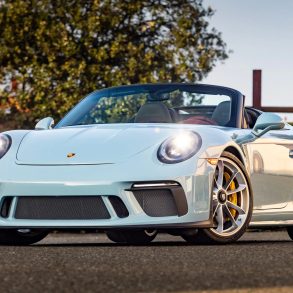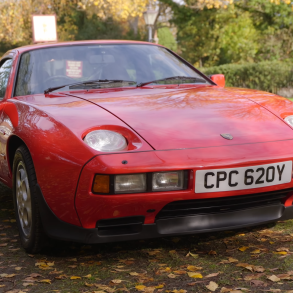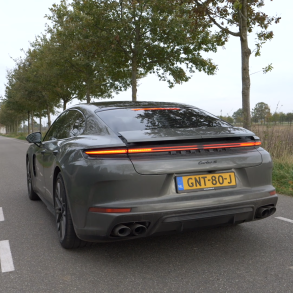From 1977 through the 1980s, Porsche 935s dominated Group 5, GTP, and GTX racing across Europe and North America. With later versions crafted by Kremer, Joest, Gaaco, and Fabcar, Porsche’s supremacy faced little opposition. This effort culminated in a historic overall win at the 1979 24 Hours of Le Mans.
Initially designed for private teams, the Porsche 935 was based on the 1976 Carrera RSR 2.1 Turbo, which had competed in the 1974 Le Mans. Engineer Norbert Singer took advantage of Group 5’s relaxed regulations to drastically modify the 930’s bodywork, adding wider fender flares and a massive rear wing. The design included a “Flachbau” (flatnose) front end, aluminum roll cage, fiberglass body sections, and lightweight materials like Plexiglass windows, reducing the car’s weight by 90 kg.
Porsche used the 1.4 turbo equivalency rule to build a 2.9-liter engine, staying within the 4-liter limit. Paired with a large KKK turbocharger, the flat-6 engine produced up to 600 bhp, depending on boost levels. Some teams opted for a larger 2994cc engine, increasing power to 630 bhp but adding ballast. Suspension upgrades included coil springs, anti-roll bars, and ventilated discs.
Between 1977 and 1984, the 935 secured over 150 victories worldwide, including class wins and overall triumphs at Le Mans, Daytona, and Sebring, solidifying its place in motorsport history.
In this video from Goodwood Road & Racing on YouTube, Gunnar Jeannette, a seasoned racing enthusiast and team principal of AO Racing, shares insights into the iconic Andial 935-L that won the 24 Hours of Daytona in 1983.











